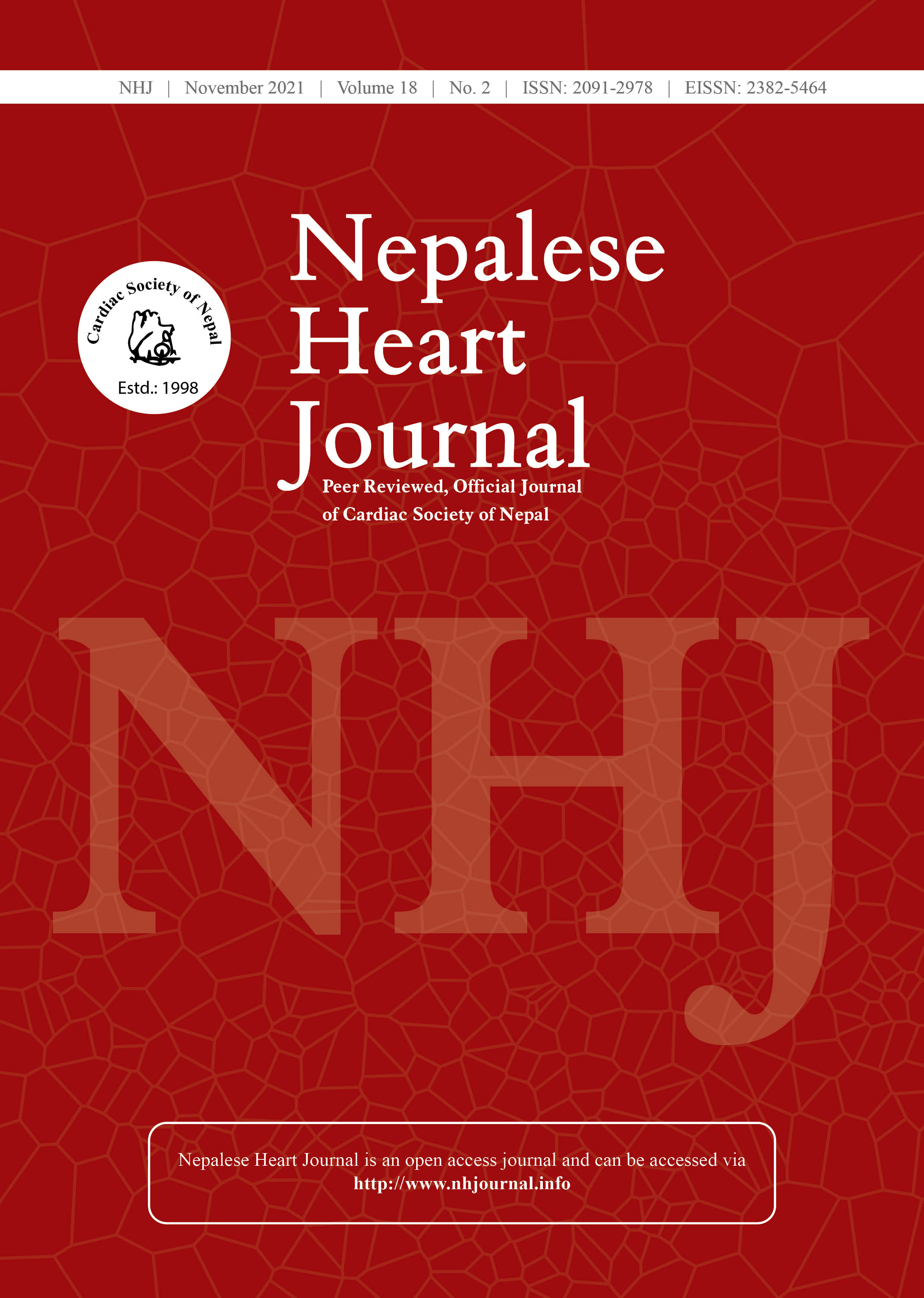Contrast Induced Nephropathy and its predictors after Primary Percutaneous Intervention
DOI:
https://doi.org/10.3126/njh.v18i2.40401Keywords:
Contrast Media, Contrast Induced Nephropathy, Primary Percutaneous Coronary InterventionAbstract
Background and Aims: Worldwide many patients are receiving intravascular contrast media (CM) during interventional procedures. Contrast media are used to enhance visualization and guide percutaneous coronary interventions (PCI).1 However, the use of CM also carries the risk of complications and it is important to be aware of these complications. Complications with CM range from mild symptoms to life-threatening conditions like anaphylaxis, hypotension and renal dysfunction and contrast-induced nephropathy (CIN) is one of them which can have both short and long term consequences.2 This study aimed to know the incidence of CIN in our center and possible predictors associated with it.
Methods: This is the single hospital based cross sectional observational study. Patients undergoing primary PCI were enrolled in the study. All the patients underwent thorough history taking and physical examination. Baseline required laboratory investigations were sent. Electrocardiogram and echocardiography screening was done before taking patient to primary PCI as per the protocol of the hospital.
Results: The number of patients enrolled in the study was 83 out of which 65(78.2%) were males and mean age was 59.7±13.2. Mean Arterial Pressure (MAP) among the patients was 103.8±21.3. Almost 2/3rd of the population received intravenous fluids. Minimum contrast volume used was 50ml and maximum was 270. When absolute rise in creatinine was considered 12 (14.5%) had CIN and when percent rise was also considered total 28 (33.7%) had CIN. While evaluating the predictors of CIN, higher mean age (p=0.01), hypotension with mean MAP <60 mmhg (p=0.04)) and higher contrast volume >100ml (p=0.04) was found to be significant.
Conclusion: The incidence of CIN in patients undergoing PPCI was similar to the studies done in other parts of the world. Evaluating the predictors of CIN, higher mean age, hypotension and higher contrast volume was the significant predictor.
Downloads
Downloads
Published
How to Cite
Issue
Section
License
Copyright (c) 2021 Nepalese Heart Journal

This work is licensed under a Creative Commons Attribution 4.0 International License.
This license enables reusers to distribute, remix, adapt, and build upon the material in any medium or format, so long as attribution is given to the creator. The license allows for commercial use.




